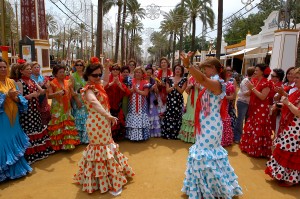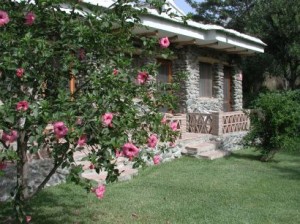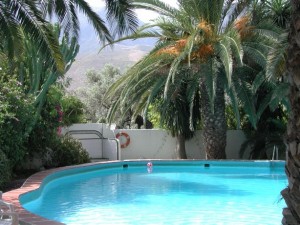It’s one of the questions I get asked the most when people first join my classes. My answer is always the same:
‘Wear what makes you feel most beautiful/handsome’ but that is comfortable’
Flamenco is a dance so full of power and pride and clothes help give us that. I’m in no way suggesting that beginners to Flamenco need to spend a fortune investing in Flamenco shoes and costumes, at least until they are sure they will continue with their study. However for women to wear a skirt or trousers that define they shape, however large or small will make them move differently. And a man wearing even a charity shop waistcoat will encourage him to use his arms correctly and pull up and the right teacher will guide them.
For women a correct practice skirt ‘ falda de ensayo’ is invaluable and takes her dancing on to another level as she learns how to use the skirt to give steps more ‘sabor’ . The technique of the skirt is an essential part of female dancing, adding sensuality, humour or gravity when used correctly. Because there are so many different skirt styles, it’s an important technique to learn to dance with each skirt style correctly as some skirts have more volume and some less. Before any theatre performance, I think about what costume to wear that will enable me to move in the way I have choreographed.
For men, it’s the same. One of my male students always comes to class looking . He’s bought high wasted trousers, a ‘chaleco’ (waistcoat) and he wears matching ‘pañuelos’ (neck scarf). He looks handsome and is able to learn how to use his waistcoat in his dancing which adds more versatility to his movements.
The other aspect of wearing authentic dress is that you are more likely to ‘feel the part’ while you are learning, you look in the mirror and like what you see which helps build your confidence which impacts on your dancing. I’ve had so many students tell me how different they feel as soon as they start wearing flamenco dress and I notice how much better they start to dance.


